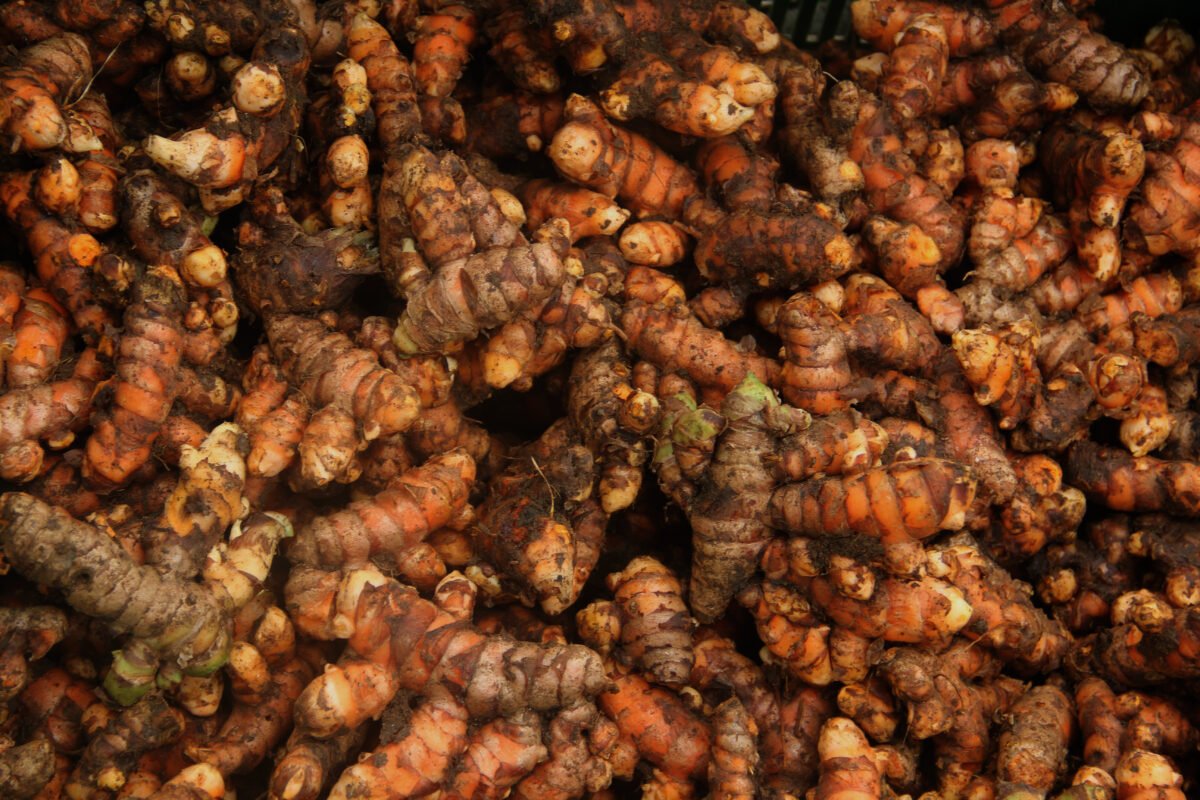Turmeric

Curcuma domestica Family: Zingiberaceae
History
Turmeric has been used in India for more than 5000 years now. Initially, it was cultivated as a dye as its’ vivid yellow color works brilliantly as a coloring agent. Then its highly developed uses came to know and people started using it for cosmetic and beautification purposes and eventually as a medicine. Later it became popular as a spice. Originating in India turmeric had reached China by 700 A.D, East Africa by 800 A.D and West Africa by 1200 A.D. Then it had begun to become popular all through the world. It is known that the Arab traders had carried turmeric with them to Europe in the 13th century.
Major Growing Areas
Turmeric is grown in wet and intermediate zones of Sri Lanka as a mono-crop and an intercrop under coconut. Major growing districts are Kurunegala, Gampaha, Kalutara, Kandy Matale and Ampara districts.
Varieties
Though there are a number of locally grown varieties they are not specially identified. There are imported varieties namely, Gunter, Puna and Madurasi Majal. and they have been mixed with local varieties.
Processing Mother and finger rhizomes should be separated, washed thoroughly and remove all stem parts. They should be left for about a day for wilting. Mother rhizomes should be cut into pieces. Rhizomes should be boiled well in a closed pot filled with ¾ of water for 30 minutes. When boiled properly rhizomes become tender. Instead of water steam boiling can also be applied. Pressure cookers can also be used to boil a few kilograms of turmeric. Boiled rhizomes should be left in-door for about a day and then put for sun drying. Drying in the first three days is limited to 3-4 hours and after that continues drying is a must. Whole drying process requires 10-15 days. When dried properly, metallic sound can be heard. Dried rhizomes are rubbed on a rough surface to become them to bright yellow in color.
Standard quality specifications
Moisture
9%
Curcumin
5-6%
Extraneous matter (to physical weight)
0.5%
Essential oil
3-5%
Source: SLSI
Products and Uses
Turmeric is available in the market as in a whole dried form or in a powdered form. It is also used as an ingredient in the preparation of curry mixtures. Oils and oleoresins are extracted from turmeric which is mainly used as a coloring and flavoring agent in the food industry. Turmeric is mainly used as a flavoring and coloring agent in the food industry. It is also used as a coloring in textiles and preparation of specific paints. In Ayurvedic and Chinese medicine turmeric is a common ingredient. In India turmeric is largely used as a disinfectant in the day to day life and in religious ceremonies.
Medicinal and Chemical Properties
The main chemical compound in turmeric is curcumin. Curcumin content varies from 2-6% depending on the species, Agro climatic conditions
